While in the beginning this appeared to be another powertourismday, we only had one bus stop before we returned to Kyoto train station for taking a last Shinkansen train to Tokyo. In Naga, about 45 driving minutes south of Kyoto and a former capital of Japan, two temples made the trip worth.
The first one, Kasuga-taisha, is a shinto shrine, placed in light forest. I noticed mostly whishes in wooden tiles and stone lanterns with white paper as lampshade also other lanterns. Some of these were lit for babys who never saw the light of the world, partly because – as our tour guide said – boy were considered more valuable than girls. You can do the maths. Interesting is that sika deer is well protected and fed (if you buy special deer crackers for them) without anyone -as far as I’ve seen – cared for their sex or gender.
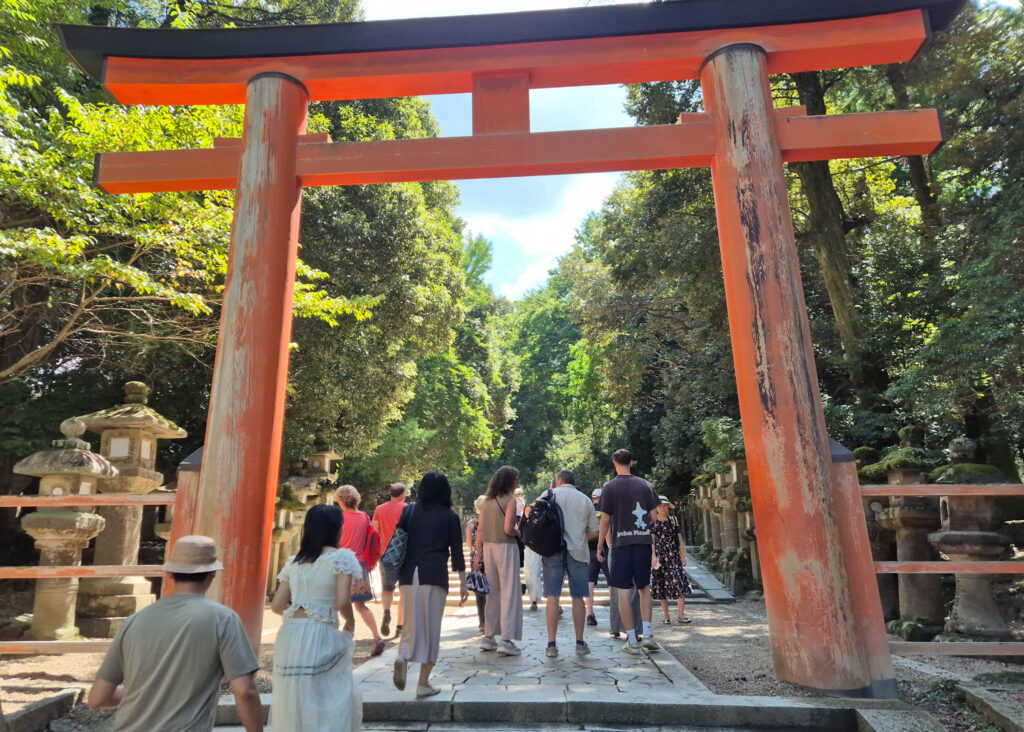
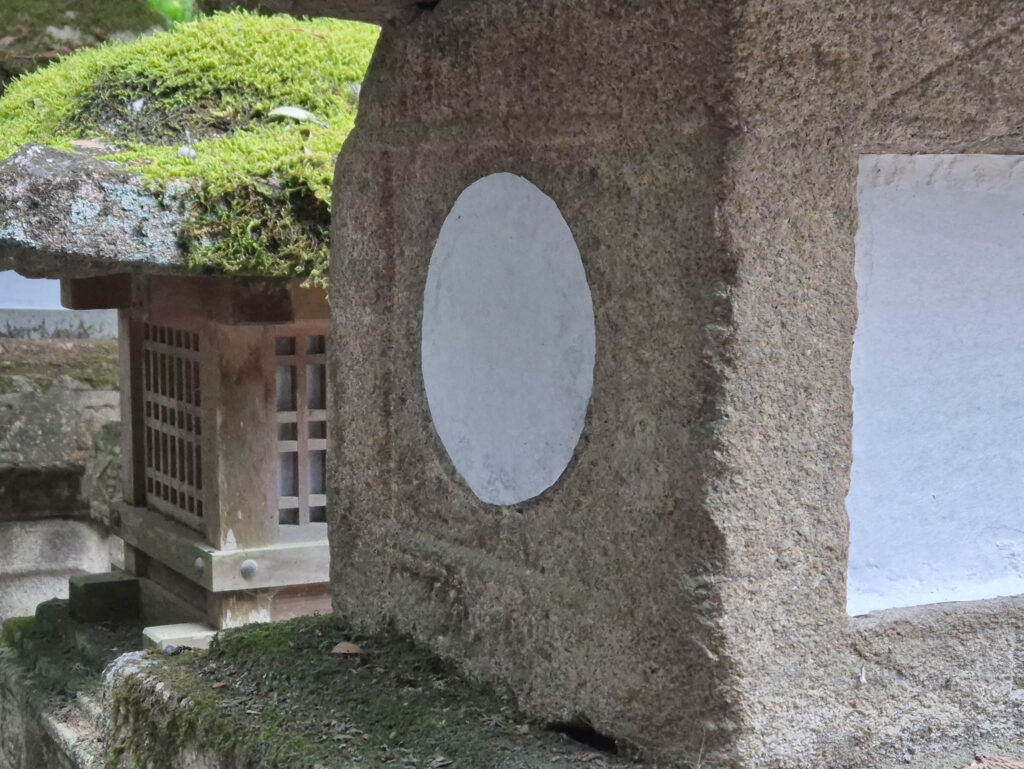
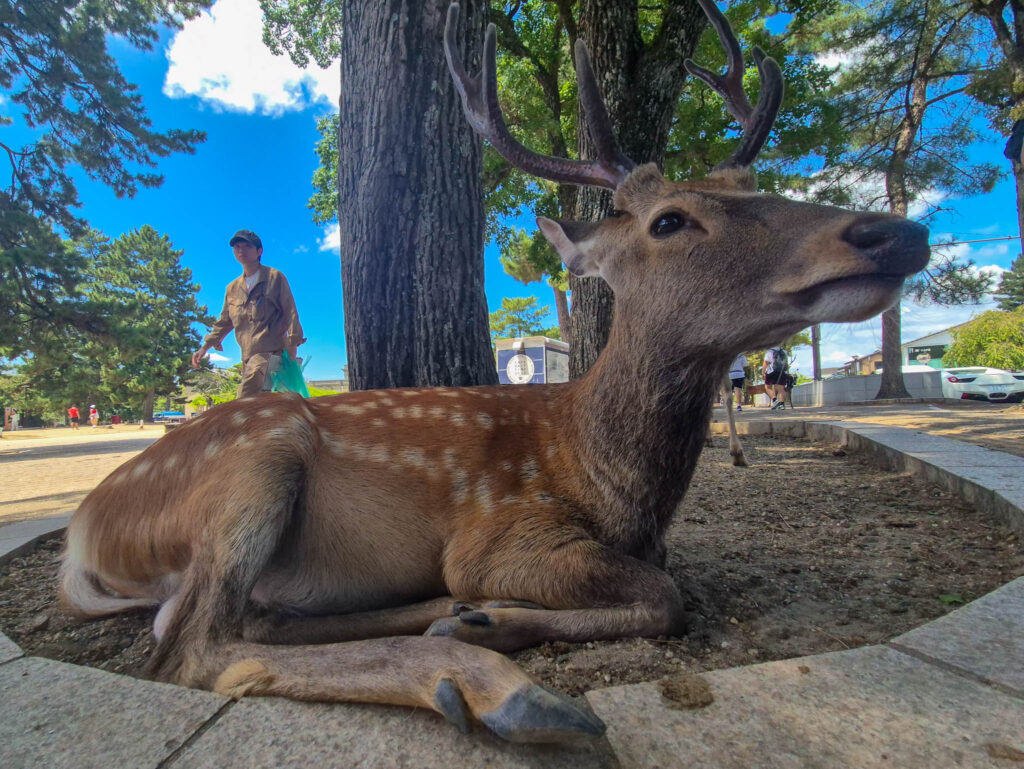
The second one is the Todaij-ji an immense buddhist temple, around 50 meters in height with a buddha made out of bronze weighing around 500 tons. The dimensions of the temple were overwhelming, but nevertheless from remote it appeared not extremely posh, rather like a normal house, just massively oversized. With surrounding lawn, water and some inscense, it felt still like a sacred place, despite thousands of the tourists constantly passing by.

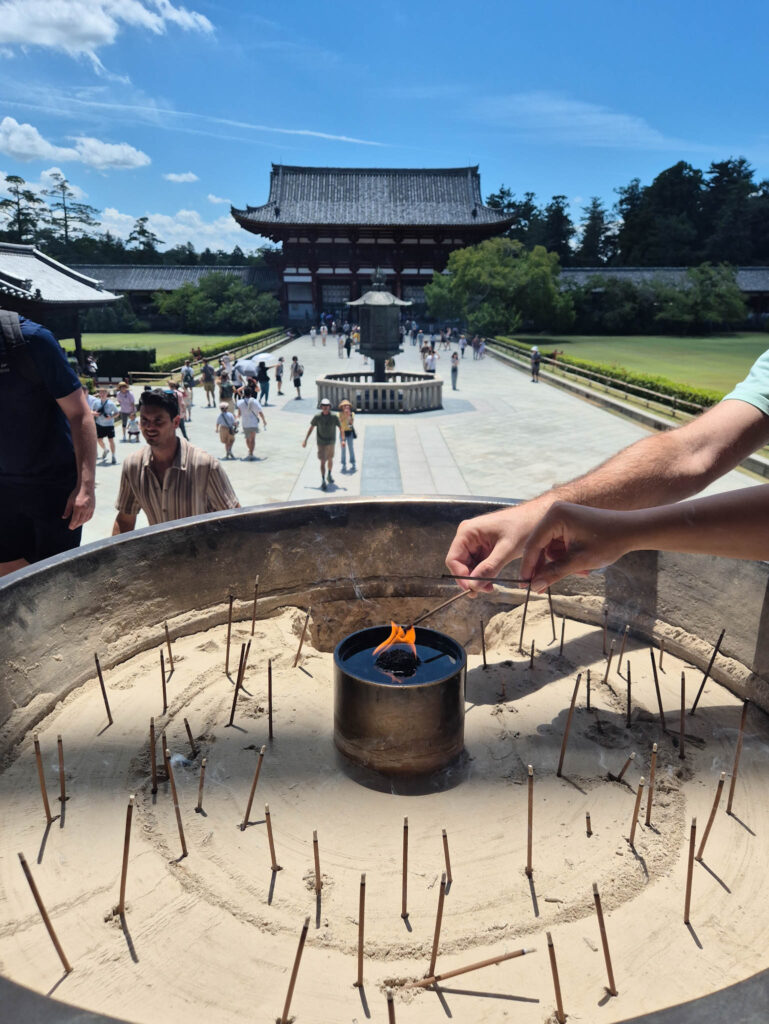
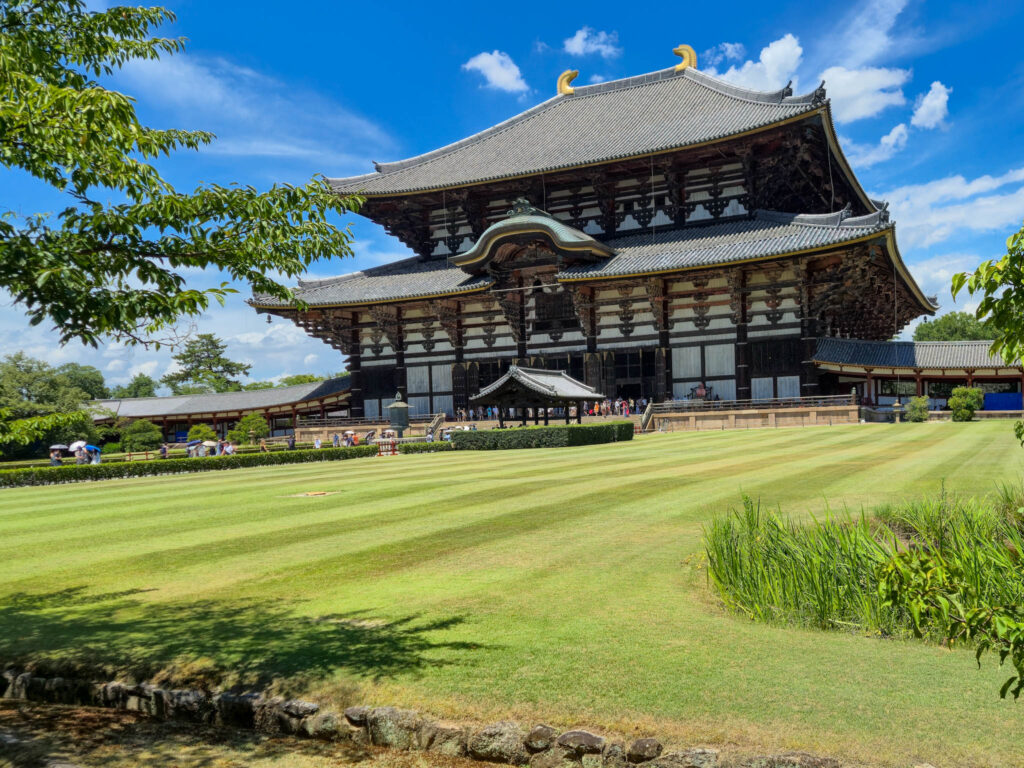
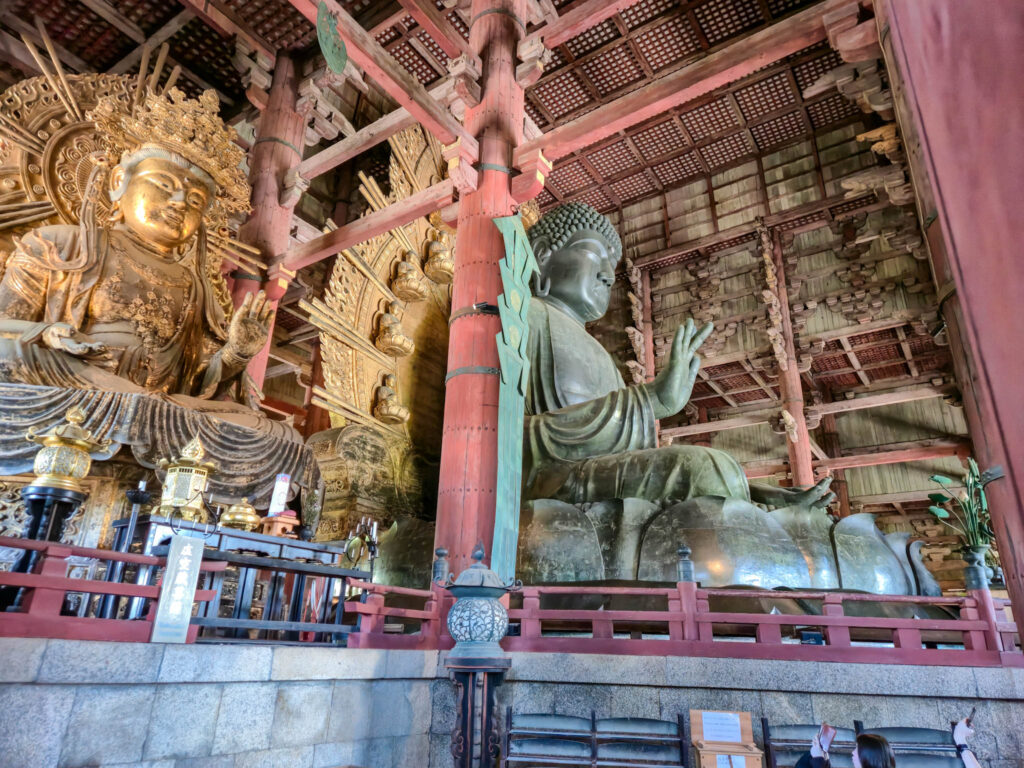
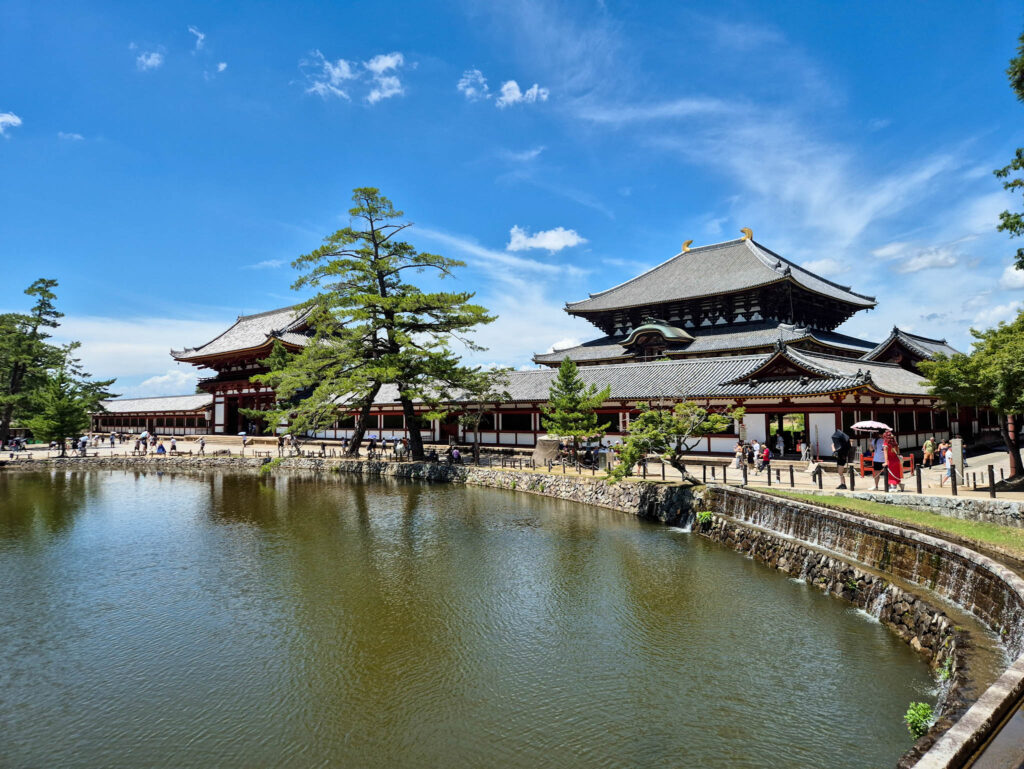
After ramen for lunch and a bus ride back to the Kyoto train station, we managed to get the Shinkansen express 16:11 for Tokyo. It goes without saying that the train left on time and arrived in Tokyo station on time.
After we exited the train, I noticed that I missed of my two tickets for that ride. For Shinkansen train rides we received from our tour guide one “ticket” and one “seat reservation”. Shortly I should learn that this is also the proof of payment of the express train surcharge. I mentioned this to our tour guide and she said that it might pose some problem because also when exiting the train station, the tickets need to be shown. We tried and when passing the exit, the Japanese native tour guide mentioned that I’ve lost on of the two tickets but it was a group booking and… No luck, we were directed to the man behind the counter, who had to deal with that. Explaining the same to him – again from the native speaker, I would have been lost on my own – resulted in more questions and the man refused to let us out. The rules say that when leaving, the ticket has to be presented. And rules are rules. Unusual for a Japanese, our tour guide complained and argumented again. The man behind the counter mentioned that he would enquire in the train, if the ticket had been found. “What?”, I thought. I could have lost it anywhere, even on the way from the gates to the train in Kyoto. Surprisingly, a minute later he confirmed that my ticket had been found and that we could therefore leave. So this is what they mean by “not losing ones face”. I am pretty sure that noone had found my ticket, but this way the clerk had fulfilled his duty against the customers and did not break any rule (himself). Always follow the rules.
At the hotel we met Levin and the other musicians again. From now on there was no compulsory visitor program but two and a half days that we could spend as we wanted. After Levin reported from the last day with his guest family, he was off again and Andrea and me went for dinner in a cheap underground restaurant that we found nearby, similar to one in Kyoto train station that we enjoyed two days before. Thus time Andrea had Karagee and I found some presumably vegetarian curry. With a fruit shake from the convenience store we returned back to the hotel.
